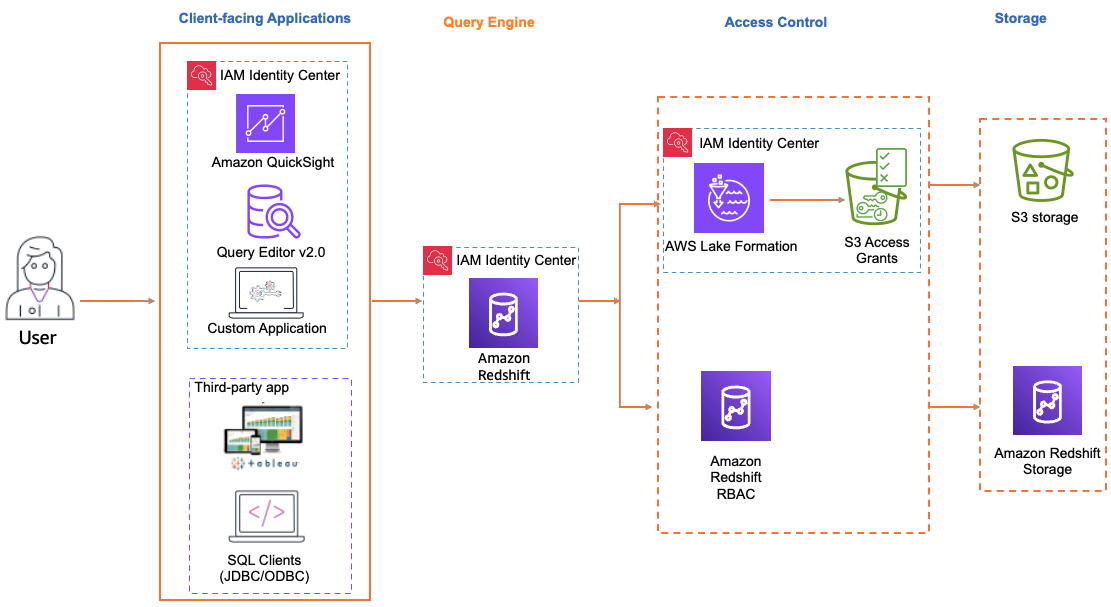Trusted identity propagation with Amazon Redshift
The steps to enable trusted identity propagation depend on whether your users interact with Amazon managed applications or customer managed applications. The following diagram shows a trusted identity propagation configuration for client-facing applications - either Amazon managed or external to Amazon - that query Amazon Redshift data with access control provided either by Amazon Redshift or by authorization services, such as Amazon Lake Formation or Amazon S3 Access Grants.

When trusted identity propagation to Amazon Redshift is enabled, Redshift administrators can configure Redshift to automatically create roles for IAM Identity Center as the identity provider, map Redshift roles to groups in IAM Identity Center, and use Redshift role-based access control to grant access.
Supported client-facing applications
Amazon managed applications
The following Amazon managed client-facing applications support trusted identity propagation to Amazon Redshift:
Note
If you are using Amazon Redshift Spectrum to access external databases or tables in Amazon Glue Data Catalog, consider setting up Lake Formation and Amazon S3 Access Grants to provide fine-grain access control.
Customer managed applications
The following customer managed applications support trusted identity propagation to Amazon Redshift:
-
Tableau including Tableau Desktop, Tableau Server, and Tableau Prep
-
To enable trusted identity propagation for users of Tableau, refer to Integrate Tableau and Okta with Amazon Redshift using IAM Identity Center
in the Amazon Big Data Blog.
-
-
SQL Clients (DBeaver and DBVisualizer)
-
To enable trusted identity propagation for users of SQL Clients (DBeaver and DBVisualizer), refer to Integrate Identity Provider (IdP) with Amazon Redshift Query Editor V2 and SQL Client using IAM Identity Center for seamless Single Sign-On
in the Amazon Big Data Blog.
-